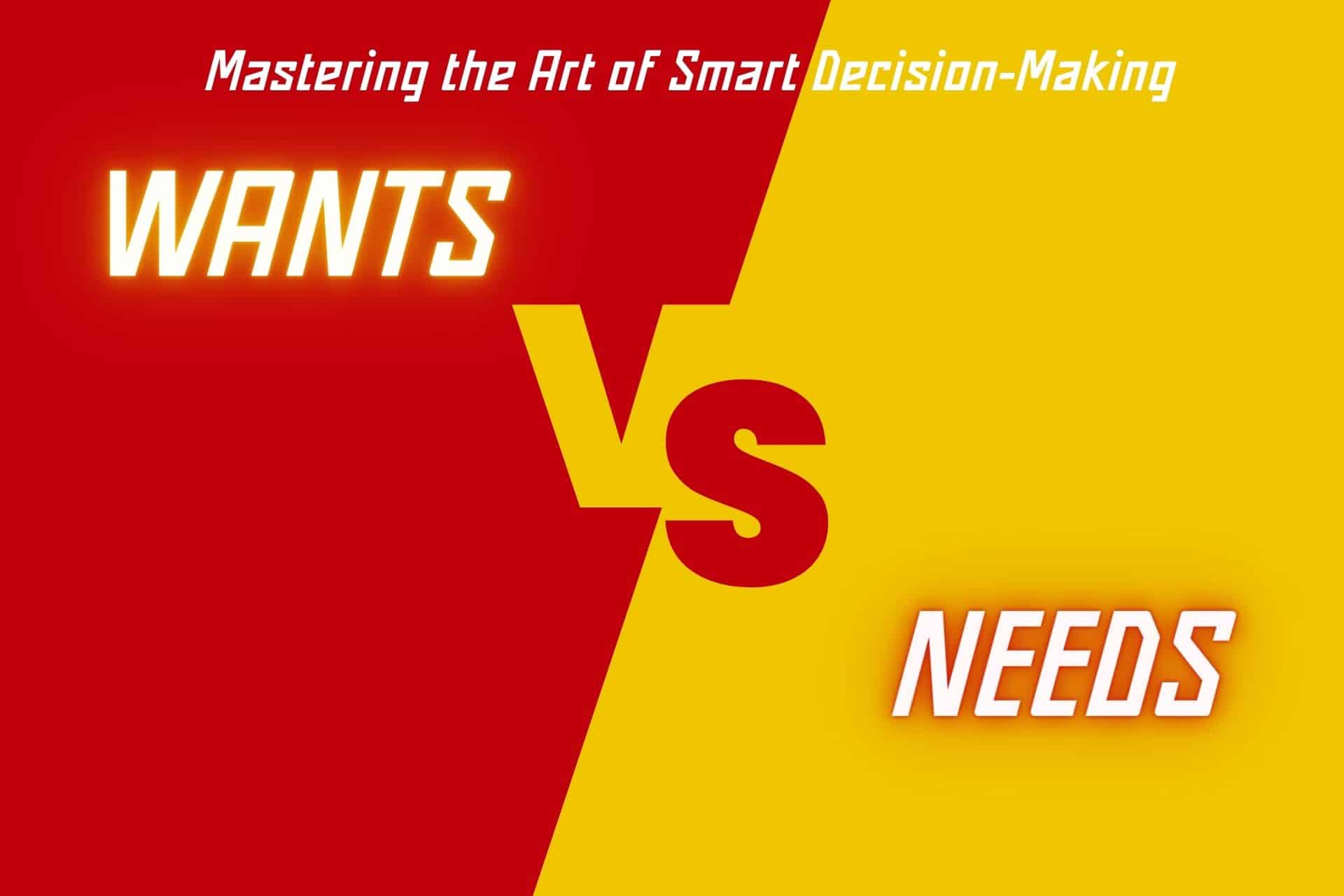The Ultimate Guide to Balancing Your Life and Wallet!
In our daily lives, especially as women, we often find ourselves at a crossroads, deciding between what we want and what we need. This choice is more than just a simple decision; it reflects our values, priorities, and understanding of our own lives. As you read this article, imagine we’re sitting down for a coffee chat, discussing navigating these choices.
Whether you’re a working professional, a stay-at-home mom, a student, or in any other role, understanding the distinction between wants and needs is crucial. It’s about making informed choices that respect our financial boundaries and align with our life goals and personal well-being.
We’ll explore the intricate dance between wants vs needs, and by the end of this conversation, you’ll have a clearer perspective on how to balance them in your life, leading to more empowered and thoughtful decisions.
Let’s get started!
Here's What You Will Find

Key Takeaways
Wants vs Needs
Understanding Wants vs Needs: The key to financial and personal well-being is distinguishing between essential needs and desirable wants.
Mindful Spending: Regular reflection on purchases helps identify whether true needs or desires drive them.
Budget Wisely: Allocating your budget with a focus on needs first, then wants, ensures financial stability without sacrificing life’s pleasures.
Balance is Crucial: Striving for a balance between fulfilling wants and meeting needs contributes to a more satisfying and sustainable lifestyle.
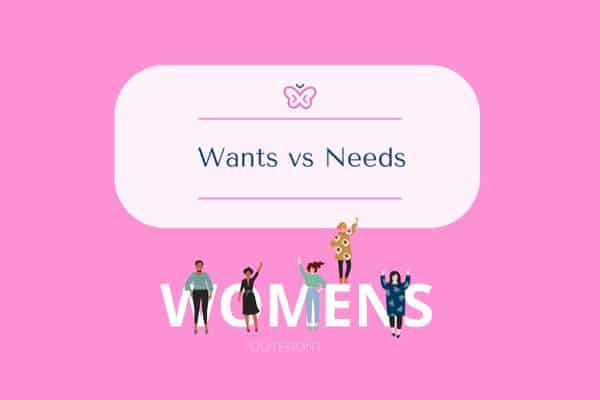
The Essence of Wants and Needs
Understanding the Basic Differences
When we talk about needs, we’re referring to those essentials in life that we cannot do without. These are the things that are necessary for our survival and basic functioning in society. Think about the air we breathe, the food we eat, the clothes we wear, and the shelter that provides us warmth and security. These needs are universally understood and are fundamental to our existence.
On the other hand, wants are things we desire to have but are not essential for survival. These can range from the latest fashion trends to the newest tech gadgets, from a luxurious vacation to a fancy car. Our environment, culture, and emotional state influence our wants. They are the extras that can bring joy, comfort, and pleasure to our lives, but we can live without them.
What is the Difference Between Wants and Needs?
The difference between wants and needs lies in their fundamental nature: needs are essential for survival and well-being, such as food, water, and shelter, while wants are desires that enhance the quality of life but are not necessary for survival, like luxury items or entertainment.
However, the line between wants and needs can often become blurred. For instance, in a professional setting, a smartphone or a laptop may seem necessary due to the nature of our work. But do we really need the latest model, or is it more of a want? This is where personal judgment and understanding of our circumstances come into play. It’s important to recognize that what may be a need for one person could be a want for another and vice versa.
In-Depth Analysis The Differences Between Wants and Needs
Understanding the distinction between wants and needs is crucial for making wise personal and financial decisions. This comprehension is not just about budgeting but also involves recognizing and aligning with our deeper values and life goals.
Here, we’ll explore the differences between wants and needs, examining their characteristics, implications, and how they intertwine daily.
Characteristics of Needs
In navigating the intricacies of life, recognizing and prioritizing our fundamental requirements is key. At the core of our existence are ‘needs’ – elements that are essential for survival and overall well-being. These needs, encompassing basics like food, water, shelter, and healthcare, are vital for functioning effectively in society.
Needs go beyond mere desires or luxuries; they are the bedrock upon which our personal health and societal structures rest. From universally experienced necessities to the non-negotiable nature of these essential elements, we will examine how needs stand apart from wants and the significant long-term consequences of overlooking them.
Essential for Survival and Well-being
Needs are the basics of living and functioning effectively in society. This includes food, water, shelter, clothing, and healthcare. Without these, our physical well-being and survival would be at risk.
Universally Experienced
Needs are generally consistent across different people. While the way these needs are met can vary culturally and personally, the fundamental needs remain the same.
Non-negotiable
Unlike wants, needs are not about choices; they are necessities. They don’t change based on our desires or external influences.
Long-term Implications
Neglecting a need can have serious long-term consequences on our health, well-being, and ability to function in society.
Characteristics of Wants
In the tapestry of our lives, wants add color and texture, providing depth beyond the basic necessities. These are the desires that, while not crucial for our survival or fundamental functioning, significantly enhance the quality of our lives. In this introduction, we’ll explore the characteristics of wants, elements that bring joy, comfort, and a sense of luxury.
Wants are as diverse as those who experience them, shaped by many factors, including personal preferences, cultural influences, and the ever-changing landscape of societal trends. We’ll explore how wants are subjective, variable, and heavily influenced by external factors like advertising, social media, and peer dynamics.
Additionally, the evolving nature of wants reflects our adaptable and dynamic human experiences, where today’s desires might not hold the same appeal tomorrow.
Enhance Quality of Life
Wants are desires that, when fulfilled, can make life more enjoyable and comfortable but are not essential for survival or basic functioning.
Subjective and Variable
Wants are highly individualized and can vary greatly from person to person. Personal tastes, cultural backgrounds, and societal trends influence them.
Influenced by External Factors
External factors like marketing, social media, peer pressure, and societal norms often shape wants.
Evolving and Flexible
Unlike needs, wants can change over time. They are adaptable to our circumstances, and what is considered a want today may no longer be a want tomorrow.
Understanding the Distinction: Wants vs Needs
Navigating the complex landscape of our desires and necessities can often feel like walking a tightrope. It’s essential to distinguish between what we want and what we truly need, as this understanding lies at the heart of financial wisdom, personal satisfaction, and mental well-being.
To start, let’s define these terms:
Needs
Needs are essentials, the non-negotiable elements fundamental for survival and basic functioning. This includes food, shelter, clothing, and healthcare. Without these, our physical well-being is directly at risk.
Wants
Wants are the extras that enhance our lives and bring joy, comfort, and fulfillment but are not vital for our survival. Wants to encompass a broad range of items and experiences, from luxury goods to vacations and from gourmet meals to the latest technological gadgets.
Psychological Perspectives
From a psychological standpoint, Abraham Maslow’s Hierarchy of Needs provides a clear framework. At the base of Maslow’s pyramid lie physiological needs (food, water, warmth, rest), which are followed by safety needs (security, safety). Only after these needs are met do we seek to fulfill psychological desires like belongingness, esteem, and eventually self-actualization, which align more closely with ‘wants.’
Financial Implications
Understanding the differences between wants and needs has significant financial implications. In personal finance, this distinction is critical for budgeting and saving. Money spent on needs is non-negotiable, whereas spending on wants should be monitored and controlled. This doesn’t mean that wants should always be neglected; rather, they should be balanced wisely with the needs.
Cultural and Societal Influence
Culturally, the line between wants and needs can often be blurred. Advertising and social media frequently reframe wants as needs, creating an illusion that certain luxuries are essential for happiness or social acceptance. It’s important to recognize and resist these external pressures and make conscious choices based on personal values and real necessities.
Emotional Health and Well-being
The distinction also plays a crucial role in our emotional health and overall well-being. Constantly chasing wants while neglecting basic needs can lead to stress and dissatisfaction. Conversely, understanding and prioritizing needs while enjoying wants within reason can lead to a more balanced and fulfilling life.
Long-Term vs. Short-Term Gratification
Wants are often associated with immediate gratification, providing a quick burst of happiness that fades rapidly. Needs, when met, contribute to long-term well-being and stability. Balancing these two can be challenging but is essential for a harmonious life.
Environment and Sustainability
From an environmental perspective, the want vs. need debate is crucial. Overconsumption of wants strains personal finances and has a broader impact on environmental sustainability. Conscious consumption, prioritizing needs, and mindful indulgence in wants can contribute to a more sustainable lifestyle.
The Interplay Between Wants and Needs
In real-life scenarios, the line between wants and needs can often blur. For example, in our modern digital world, internet access might be a need for some due to its role in work and education, but for others, it remains a want. Similarly, a car might be a need for someone living in a rural area with no public transportation but a want for someone in a city with robust transit systems.
Implications of Misunderstanding Wants vs Needs
Misinterpreting wants as needs can lead to financial strain and lifestyle inflation, where increases in income lead to increased spending on non-essential items. On the other hand, overly restricting oneself to only basic needs can impact mental well-being and life satisfaction. Achieving a balance is key.
Deciphering the Essentials: Needs vs Wants
In the journey of life, distinguishing between what we fundamentally require for survival and what we desire for additional comfort and pleasure is vital. This distinction plays a crucial role in prioritizing our resources and making decisions. The following table clearly compares ‘needs’ and ‘wants,’ with ten examples each.
Needs are the non-negotiable essentials critical for our basic living and well-being, while wants are those extras that enhance our life experience but are not indispensable.
Understanding this difference is key to managing our personal and financial well-being effectively.
Here’s a table outlining ten examples of needs and ten examples of wants:
| Needs (Essential for Survival) | Wants (Enhance Quality of Life) |
|---|---|
| 1. Food | 1. Gourmet Meals |
| 2. Water | 2. Home Decor |
| 3. Shelter | 3. Latest Smartphone |
| 4. Basic Healthcare | 4. Luxury Car |
| 5. Clothing for Protection | 5. High-end Cosmetics |
| 6. Air for Breathing | 6. Vacation Trips |
| 7. Sleep | 7. Subscription Services |
| 8. Personal Safety | 8. Home decor |
| 9. Sanitation and Hygiene | 9. Jewelry |
| 10. Basic Education | 10. Entertainment (movies, games) |
This table helps illustrate the clear distinction between the essentials required for survival and well-being (needs) and those items or experiences that are not essential but provide additional comfort or pleasure (wants).
Strategies for Distinguishing Wants from Needs
Navigating the delicate balance between wants and needs is fundamental to managing our personal and financial lives. The line between the two can often become blurred, leading to confusion and potential financial strain. However, by adopting specific strategies, we can sharpen our understanding and make decisions that serve our best interests in the long run.
We will explore effective strategies such as Mindful Reflection, Budget Allocation, adopting a Long-term Perspective, and seeking a Balanced approach. These methods are not just about cutting costs or limiting pleasures; they are about making conscious choices that contribute to a sustainable and satisfying life.
Understanding and respecting the differences between wants and needs empowers us to navigate our financial and personal journeys more confidently and clearly.
Let’s explore these strategies to learn how they can help us distinguish and manage our wants and needs effectively.
Mindful Reflection
Regularly reflect on purchases and lifestyle choices to assess whether genuine needs or desires drive them.
Budget Allocation
Allocate your budget in a way that prioritizes needs and allows for fulfilling wants without compromising financial stability.
Long-term Perspective
Consider the long-term impact of fulfilling a want versus a need, especially regarding financial security and life goals.
Seek Balance
Strive for a balanced approach that recognizes the importance of both needs and wants in contributing to a fulfilling life.
By understanding and respecting the differences between wants and needs, we can make more informed decisions that align with our personal and financial goals. This knowledge empowers us to manage our resources wisely, ensuring a life that is not only sustainable but also rich and fulfilling.
The Science Behind Decision Making: Wants vs Needs
Our decision-making process is a complex interplay of logic, emotion, and environmental cues. Behavioral economics and psychology research show how we differentiate between wants and needs. When we assess our needs, the decision-making process tends to be more straightforward and rational. We recognize these as necessities for our daily living and survival.
However, our emotions play a bigger role when it comes to wants. The anticipation of the pleasure or satisfaction we’ll get from fulfilling a want can often overpower our rational thinking. This is where things get tricky. Advertisements and societal pressures can heavily influence our perception of wants, making them seem like needs. The result? We often make purchases that we later regret or realize were unnecessary.
Influenced by a blend of logic, emotion, and environmental factors, our decision-making process plays a crucial role in differentiating between wants and needs. Research in behavioral economics and psychology highlights this complexity. Needs are essential for survival, while wants are desires beyond basic necessities. Emotions significantly impact our choices, especially regarding wants, where they can override rational thought.
This emotional influence often leads to decisions driven by external factors like marketing and societal pressures, which can blur the line between wants and needs. Understanding these dynamics can lead to more mindful decision-making balancing emotional impulses with rational considerations.
Understanding these psychological underpinnings can help us make more mindful choices. Recognizing the emotional triggers and societal influences in our decision-making process enables us to pause and reflect on whether a purchase is a genuine need or a desire driven by external factors. This knowledge is crucial for making informed decisions that align with our true needs and wants.
Real-Life Scenarios: Illustrating Wants vs Needs
Let’s look at some relatable scenarios to bring this concept to life. Picture Anna, a working professional. For her, a dependable means of transportation is a need – it gets her to work and back home. However, choosing a luxury car over a functional and affordable one falls into the realm of wants. Here, the need is transportation, but the want is luxury and status.
Another example could be in the context of parenting. A mother must ensure your child has nutritious food, a safe home, and a good education. But signing them up for every extracurricular activity, buying the latest toys, or going on extravagant vacations, while beneficial, are more wants than needs.
These examples highlight that the distinction between wants and needs is not just about the items or services but our motivations and priorities behind choosing them.
Strategies to Balance Wants and Needs
In the quest to achieve a harmonious balance in our personal and financial lives, distinguishing between wants and needs is essential. This distinction, however, is often easier said than done. The challenge lies in the subtle yet significant blur between these two categories, which can lead to confusion and, at times, financial missteps. To navigate this complex terrain effectively, we must adopt certain strategies that clarify this distinction and guide us toward making more mindful and beneficial decisions. This section will explore key strategies: Mindful Reflection, Budget Allocation, Long-term Perspective, and Seeking Balance.
These are not mere tools for financial restraint but pathways to a deeper understanding of our priorities and desires. They aim to foster a lifestyle where both needs and wants find their rightful place, contributing to our overall well-being and satisfaction. Join us as we delve into these strategies, each offering unique insights into how we can adeptly manage our wants and needs, leading to a more fulfilled and financially sound life.
So, how do we strike a balance between our wants and needs?
Here are five strategies:
Create a Budget
The first step is to create a budget that prioritizes your needs. Allocate a specific portion of your income to cover essential expenses like rent, groceries, utilities, and healthcare. Once your needs are covered, you can allocate a portion for your wants.
Prioritize Your Expenses
Within your budget, categorize your expenses. Determine what’s absolutely necessary and what’s a luxury. This helps in making conscious decisions about where your money goes.
Practice Mindful Spending
Before purchasing, ask yourself if it’s a need or a want. Reflect on the value it will add to your life and whether it aligns with your financial goals.
Set Financial Goals
Having clear financial goals can guide your spending habits. Whether it’s saving for retirement, building an emergency fund, or saving for a vacation, these goals can help you stay focused and make wise spending choices.
Educate Yourself
Knowledge is power. Educating yourself about personal finance, budgeting techniques, and investment strategies can empower you to make informed decisions about your money.
The Emotional Aspects of Wants and Needs
Our emotional state plays a significant role in differentiating and managing our wants and needs. Emotional spending, for instance, is a common phenomenon where we make purchases based on our feelings rather than our actual needs. This can lead to impulse buying, overspending, and eventual financial stress.
As women, we often face the challenge of emotional spending more acutely, perhaps due to societal pressures or personal experiences. Recognizing these emotional triggers is the first step toward managing them. It’s about finding healthier ways to fulfill our emotional needs without spending unnecessarily. This could mean seeking support from friends, engaging in hobbies, or practicing mindfulness.
Empowering Women: Managing Wants and Needs in Daily Life
Women often face unique challenges when it comes to balancing wants and needs. These challenges can stem from societal expectations, our multiple roles, or even the pay gap in some industries. However, we can navigate these challenges more effectively by empowering ourselves with knowledge and self-awareness.
Take the story of Lina, for instance. A single mother who returned to school while working full-time, she learned to prioritize her spending to balance her needs and wants. She focused on her long-term goal of providing a better future for her family, which guided her financial decisions.
By sharing these stories and strategies, we hope to empower you to take control of your financial decisions. Remember, understanding the difference between wants and needs is not about restricting yourself; it’s about making choices that bring you closer to your goals and true happiness.
Challenges in Distinguishing Wants from Needs
One of the key challenges in differentiating wants from needs is the ever-evolving nature of our desires and circumstances. What may start as a want can gradually become a perceived need due to changes in lifestyle, societal pressure, or personal growth. This evolution can make maintaining a clear boundary between the two difficult.
For instance, consider the role of technology in our lives. A decade ago, a smartphone might have been a luxury, a ‘want.’ Today, for many, it’s a ‘need’ due to its role in our professional and personal lives. This shift illustrates how societal changes can influence our perception of needs and wants.
Another challenge lies in the realm of emotional spending. It’s easy to justify a want as a need when we’re feeling stressed, unhappy, or even overly joyous. Emotional states can cloud our judgment, leading us to spend on wants while believing they are needs.
It’s important to reassess our priorities regularly and to overcome these challenges, staying mindful of how they may change over time. Regularly checking in with ourselves helps align our spending with our current life situation and long-term goals.
The Financial Impact of Confusing Wants and Needs
When wants are mistaken for needs, it can lead to financial strain. Overspending on wants can divert funds from genuine needs, savings, or debt repayment. This can result in a cycle of financial stress and anxiety, particularly for women who may already be managing tight budgets due to wage gaps or single-income households.
Understanding the financial impact of this confusion is crucial. It’s not just about the immediate cost of a purchase but also about the long-term opportunity cost. Money spent on non-essential wants could be used to build an emergency fund, invest for the future, or even secure better educational opportunities for children.
We can avoid these financial pitfalls by being more discerning in our spending choices. This doesn’t mean eliminating all wants but rather being strategic about when and how we indulge in them.
Practical Tips for Managing Wants and Needs
Grasping the difference between wants and needs is key to both financial stability and personal contentment, yet it’s often a tricky path to navigate. This distinction, while crucial, can be blurred, leading to challenging financial and personal decisions. To effectively manage this, we need practical strategies that help make this distinction clear and guide us toward making choices that align with our long-term well-being.
We will explore essential strategies like Mindful Reflection, Budget Allocation, Long-term Perspective, and Seeking Balance. These aren’t just methods to control spending; they’re tools for better understanding our priorities and achieving a balanced life where both needs and wants are addressed. Let’s look at how these strategies can help us differentiate and manage our wants and needs more effectively.
To effectively manage wants and needs, consider these practical tips:
Track Your Spending
Keep a record of your expenses. This will help you identify patterns and areas where you might be confusing wants with needs.
Wait Before You Buy
Implement a waiting period for non-essential purchases. This can help reduce impulse buying.
Seek Quality Over Quantity
Regarding needs, invest in quality items that last longer rather than opting for cheaper, less durable options.
Find Affordable Alternatives
For wants, look for less expensive alternatives that still satisfy your desire without breaking the bank.
Involve Your Family
Make budgeting and distinguishing between wants and needs a family activity. This promotes financial literacy and helps everyone understand the household’s financial goals.
Empowering Women to Make Informed Decisions
Empowering women to make informed decisions about their wants and needs is vital. It’s about providing the tools and knowledge to make choices that support their goals and values. Encouraging women to take an active role in their financial planning, educating themselves about personal finance, and understanding the psychology behind their spending habits can lead to more empowered and confident decision-making.
When women are empowered financially, it benefits them individually, their families, and their communities. Financially savvy women can better support their children’s education, contribute to their communities, and achieve greater economic independence.
FAQs
What is the fundamental difference between wants and needs?
Needs such as food, shelter, and clothing are essential for survival and basic functioning. Conversely, wants are desires or items that enhance our lives but are not essential for survival.
How can I determine if something is a want or a need?
Ask yourself whether the item or service is necessary for your basic living and well-being. If it’s something you can live without or is more about personal enjoyment, it’s likely a want.
What strategies can I use to manage my wants and needs effectively?
Create a budget prioritizing needs, practice mindful spending, set financial goals, track your expenses, and educate yourself about personal finance.
Can wants ever become needs?
Yes, depending on changes in lifestyle, technology, and societal norms, what was once a want can evolve into a need. For example, a smartphone may be considered a need in today’s digitally connected world, whereas it was a want a decade ago.
How can understanding wants vs needs help me financially?
By distinguishing between wants and needs, you can make more informed spending decisions, prioritize your financial goals, avoid unnecessary debt, and save more effectively for the future.
Is it okay to spend on wants?
Absolutely! It’s important for personal satisfaction and quality of life. The key is to do so in moderation and after your needs and financial obligations have been met.
Mastering the Balance Between Wants and Needs
Understanding and managing the balance between wants and needs is a skill that can lead to a more fulfilling and financially secure life. By recognizing the difference, employing strategies to manage both, and understanding the emotional and financial impacts, women can make empowered decisions that align with their goals.
Remember, it’s not about depriving yourself of joy or comfort; it’s about making choices that bring long-term happiness and stability.
We hope this article has provided you with valuable insights and practical tips. Share this knowledge with other women in your life who may benefit from it, and remember, we’re here to support you in your journey toward financial empowerment and self-awareness.
More on Needs
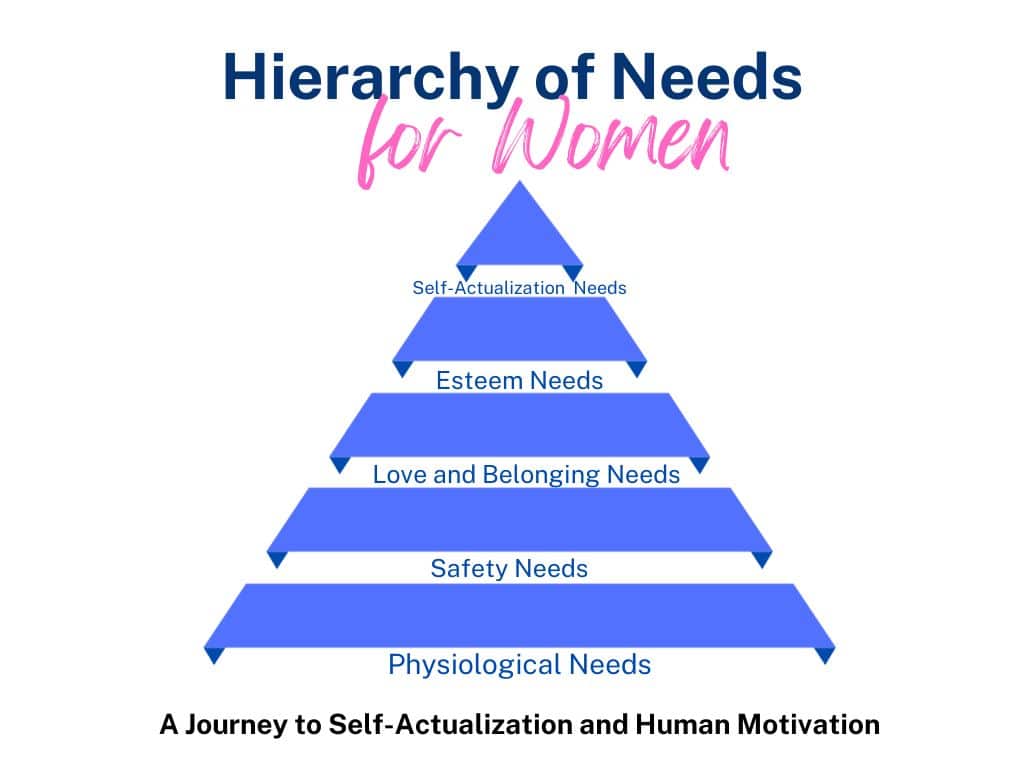
Empowering Women Through Understanding the Hierarchy of Needs
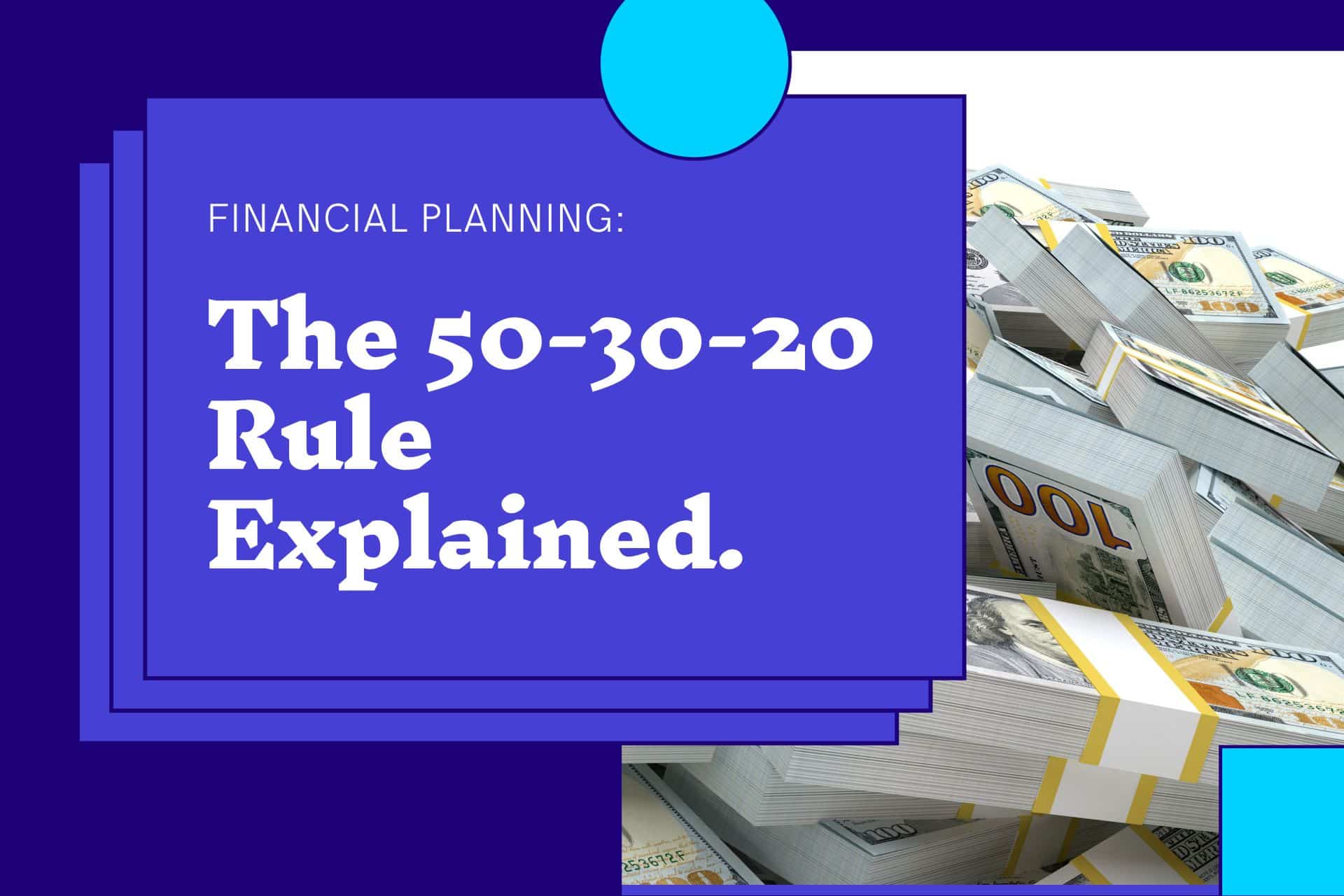
50-30-20 Rule Revealed: Budget Like a Pro and Save More!
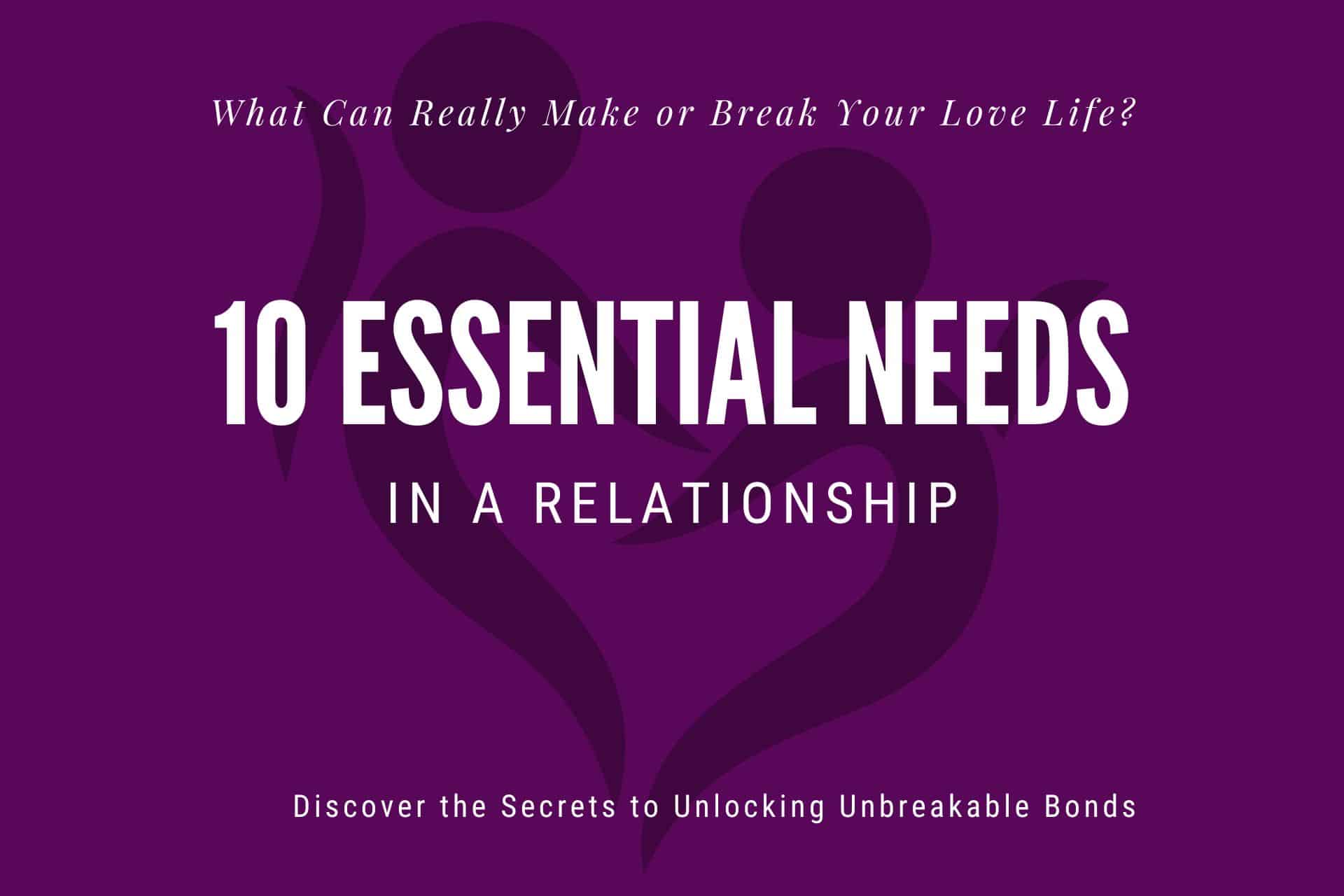
10 Essential Needs in a Relationship: Discover What Can Really Make or Break Your Love Life
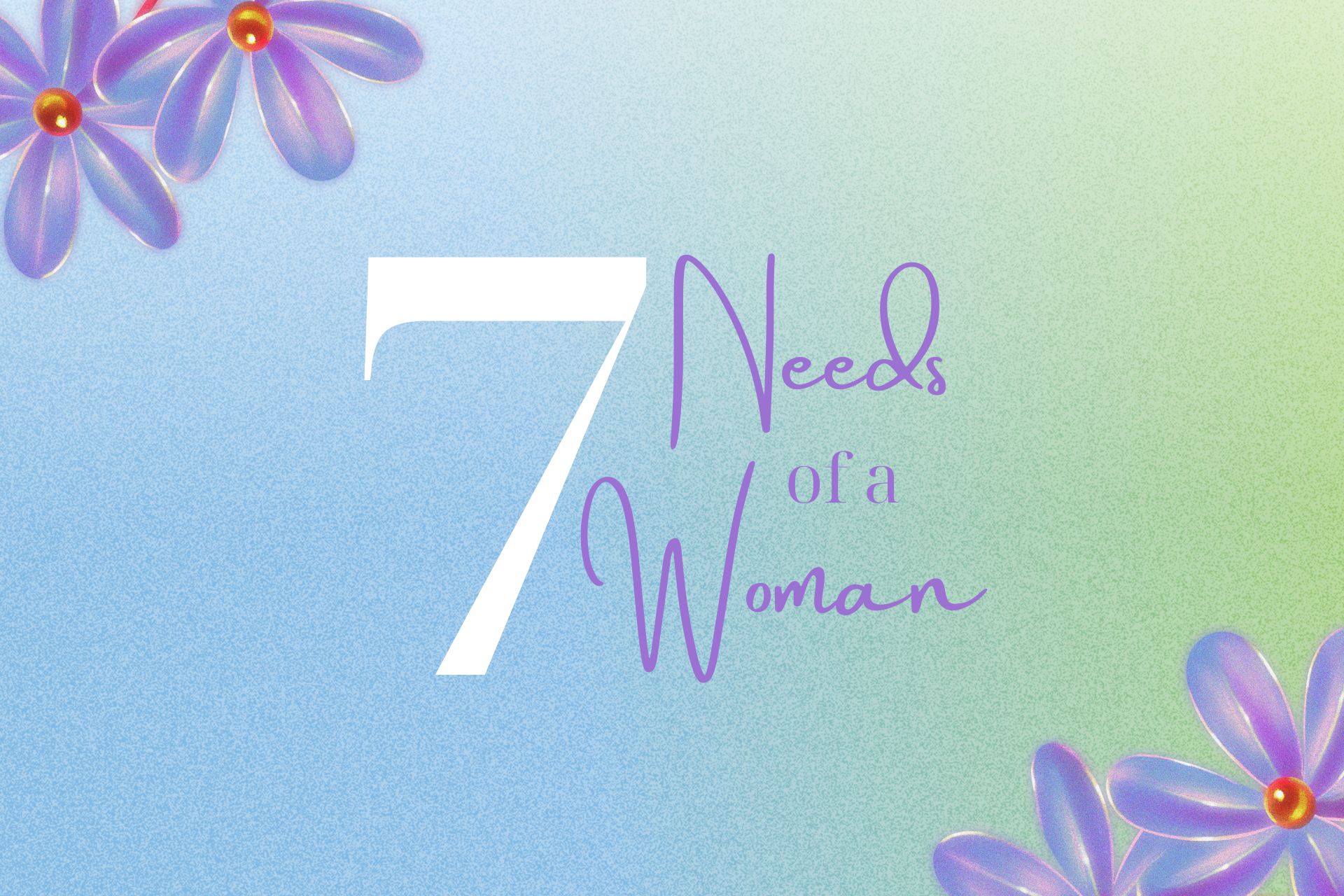
7 Basic Needs of a Woman You Need to Know and Not Ignore!
Related Articles
Discover How to Change Your Mindset in Just 7 Easy Steps! Find How Step 3 is the Best!
Mindset Makeover: Transform Your Life with These 8 Game-Changing Attitudes!
5 Powerful Manifestation Techniques So Effective, You’ll Wish You Tried Them Sooner!
Manifestation Power: Unlock the Secret to Transforming Your Dreams into Reality!
How to Focus Your Attention Like a Pro: 7 Game-Changing Strategies You Can’t Miss!



